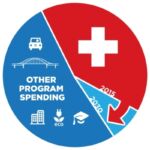Anesthesia and Respiratory devices are described as special-purpose medical devices which are used for the diagnosis and treatment of respiratory diseases. According to the market database, these diseases include Chronic Obstructive Pulmonary Diseases (COPD), asthma, tuberculosis, and pneumonia. Such types of devices are generally observed in hospitals, clinics, home care settings, and ambulatory service centers. The market penetration rate for these devices within the healthcare module can be studied using Global Market Database. The cloud based market research tool studies the shift in line with changing market trends.
Market database states that respiratory devices have a huge scope of use and have commanded a greater share in the global market. Market research tools state that they are utilized to provide oxygen for breathing, to prevent airway collapse, treat patients with breathing problems, and more. Anesthetic devices are used during surgical procedures to control pain, breathing, blood pressure, blood flow, and heart rate as per market analysis. The anesthetic gas is comprised of two critical components which include nitrous oxide and halogenated agents according to market research reports. These halogenated agents can range from halothane, enflurane, isoflurane, and more. According to the market database, anesthesia is used to induce medical states that lead to loss of sensation which include relief from pain, muscle relaxation, loss of memory, and others.
Market research states that the global COVID-19 induced pandemic has resulted in increased use of these devices. This is due to the target area of the infection is the respiratory system of the individuals. The admitted patients have reported shortness of breath or other respiratory problems. Hence, according to the procured market database, the wide-scale manufacturing and supply of these devices have become imperative to treat the patients.
The Anesthetic Cluster:
As per the market database, based on the anesthetic product type, the market is broadly classified as anesthesia delivery machines, anesthesia disposables & accessories, and anesthesia monitors. Market analysis suggests that anesthetic delivery machines are used to transfer the mixture of gases into the individuals for a successful anesthetic procedure. Different forms of gases such as nitrous oxide and other halogenated agents are injected into the machine in a compressed form. These compressed gases are transferred through a central supply located in the hospital or other medical establishments. The supply chain dynamics associated with the Anesthetic cluster can be studied using Global Market Database. The market intelligence platform provides free market data across 600+ verticals.
Market database states that anesthesia disposable and accessories are further divided into various individual elements. Market research tools state that these elements include anesthesia circuits, masks, resuscitators, laryngoscopes, flexible intubation scopes, super glottic airways, ventilator circuits, and others. Anesthesia circuits are small and portable that is used to administer anesthesia to a patient in a faster manner. Market research tools suggest that these types are generally observed in medical ambulances. The advantages of being portable and quick to administer have contributed towards an optimistic business outlook for this type. Market database states that anesthetic masks are integrated with the anesthesia delivery systems which act as the medium to transfer the gas into the human body. The super glottic airway devices are a group of airway devices that can be inserted into the pharynx to allow oxygenation and administration of anesthetic gases. The prominent growth segments for this market can be understood using Global Market Database. The cloud based market research tool provides free market data for the first 5 GMD logins.
According to market research reports, anesthetic monitors are required to record and track the concentration of the anesthetic gases that are being administered. As per the market database, the monitors are further classified as basic, advanced, and integrated types. Market research tools state that the basic monitors perform the simplest task of monitoring the anesthetic activity in the patients. These devices can be stand-alone or integrated with the anesthesia delivery machine. Advanced monitors are used to tracking further metrics of the patients and monitor the vital signs coupled with the anesthesia gas concentration.
Variety of Respiratory Devices:
The overall global market for respiratory devices is expected to stay buoyant in the long run. According to the market database, this is due to the availability of these devices in different forms which can be utilized for varied applications. Market research tools like Global Market Database state that hospitals and clinics are the major end-users of these devices. According to the market database, based on the respiratory devices, the market is divided into individual elements such as therapeutic devices, masks, ventilators, nebulizers, humidifiers, oxygen concentrators, inhalers, positive airway pressure devices, and oxygen hoods.
Market research reports state that therapeutic respiratory devices are utilized in dedicated therapy procedures to increase the oxygen supply to the brain. Nebulizers are commonly used for the treatment of asthma and providing the medication in the form of a misty gas. Humidifiers are observed in hospitals and home care settings as well to unblock the nasal passage of the patients according to the healthcare module’s market data. Oxygen concentrators are dedicated devices that only store the oxygen in them from the different sources of gases supplied. They act as a reservoir of oxygen for quick use.
Market research tools state that positive airway pressure devices are used for treatments of sleep apnea and other respiratory diseases. It makes use of a machine to pump air under pressure into the airway of the lungs. They help in the prevention of airway collapse. Oxygen hoods are special-purpose canopy-shaped devices that cover the head and shoulders of the patients to provide oxygen at a higher concentration than the normal levels. The growth in adoption of this technology owing to the recent advent of COVID-19 and the change in business outlook can be studied via market research tools. Market intelligence platforms like Global Market Database can study the growth dynamics and provide relevant as well as free market data.
Growth Catalysts:
Market database states that COVID-19 infection has propelled the demand for these devices worldwide. Market research tools suggest that manufacturers have increased their capacity to meet the accelerated demand. Furthermore, a rise in other respiratory diseases has contributed to the positive business outlook. According to the World Health Organization (WHO) in the year 2016, around 251 million cases of COPD were reported globally. Continuous investment by the public and private players along with favorable policies have supported the positive business outlook for these devices. The Anesthesia and Respiratory Devicess for this sector and its impact on the healthcare industry can be studied using Global Market Database. The cloud based market research tool provides competitive and free market data which can be used to make strategic decisions by players within this market.
Market database states that increased research activities related to these devices to merge the hardware and software components have unlocked more innovative solutions. The use of respiratory devices for remote patient monitoring has allowed for improved diagnosis and treatment according to market research tools. Market database states that the trend has been accelerated by COVID-19. These devices are now equipped with the software to provide real-time insights to patients by constant monitoring and storage. The stored data is now shared with medical professionals via cloud networks according to market research tools. Further technological advancements in healthcare modules and IT infrastructure and other techniques have supported the growth in this market. The introduction of IoT and advanced analytics have led to accurate predictive modeling and enhanced the decision-making ability of the medical staff.
The U.K Market Perspective of Anesthesia and Respiratory Devices:
Market database states that the region experienced a harsh COVID-19 impact and accelerated the demand for such devices in hospitals, clinics, and other medical establishments. According to market research tools, the prevalence of other respiratory diseases such as COPD, asthma, etc. has sustained the growth in this region. For instance, according to National Health Service (NHS) in 2016, around 1.2 million people were suffering from COPD in the U.K.
A well-established healthcare ecosystem along with favorable government policies have contributed towards a positive business outlook. The government has diverted more focus on adherence to Good Manufacturing Practices (GMP) and has initiated a quick reimbursement framework to enhance the quality of the operations. Due to the Brexit, the region is expected to focus on native manufacturing capacity to reduce the dependency on medical equipment from other countries.


